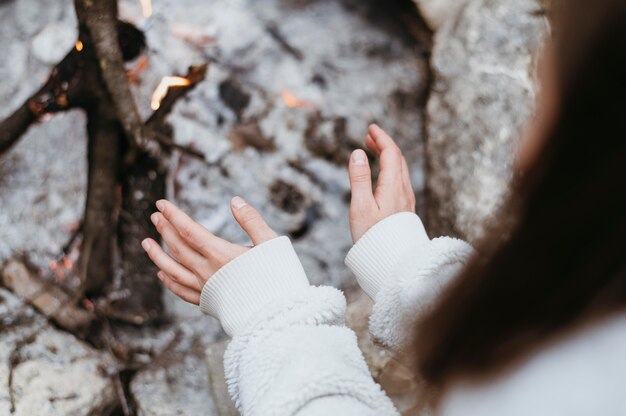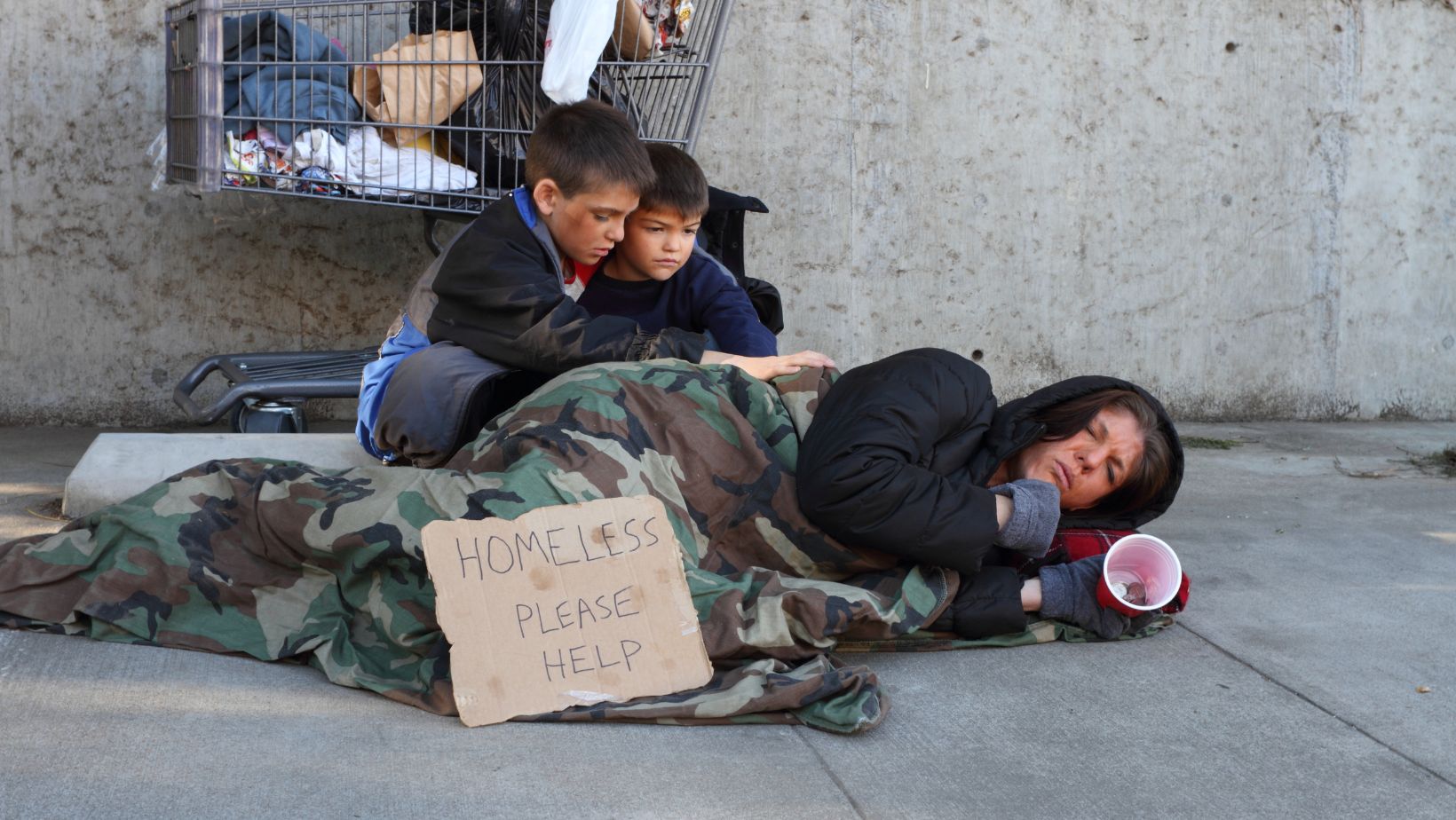In situations where you find yourself without the comfort and protection of shelter, staying warm can be a life-or-death challenge. Whether you’re lost in the wilderness, stranded in the cold, or facing an emergency, understanding how to generate and conserve heat is essential. This article explores effective ways to stay warm when you have no shelter, ensuring your survival in harsh conditions.

Layering Clothing: The Foundation of Heat Retention
The Base Layer: Moisture Management
The first layer of clothing is crucial for moisture management and insulation:
- Wicking Material: Choose a base layer made of moisture-wicking material, such as polyester or merino wool. This layer helps move sweat away from your body, keeping you dry.
- Avoid Cotton: Avoid cotton in cold and wet conditions. Cotton retains moisture, leading to rapid heat loss. Opt for synthetic or wool alternatives.
The Insulating Layer: Trapping Warmth
The insulating layer provides warmth by trapping body heat:
- Fleece and Down: Fleece and down jackets are excellent insulators, providing warmth without adding much weight.
- Layering: Add multiple insulating layers if necessary. Layering creates air pockets that trap warm air close to your body.
- Synthetic Insulation: Synthetic insulation retains warmth even when wet, making it a good choice for cold and damp conditions.
The Outer Layer: Wind and Waterproof
The outer layer shields you from wind, rain, and snow:
- Windproof and Waterproof: Invest in a windproof and waterproof shell to protect against the elements. Look for a breathable fabric to prevent moisture buildup.
- Adjustable Features: Choose a jacket with adjustable cuffs, hoods, and waistbands to seal out the cold.
- Ventilation: Ensure your outer layer has ventilation options, such as underarm zippers, to release excess heat when needed.
Head and Hands: Key Heat Escapes
Don’t forget to protect your extremities:
- Hat: Wear a warm hat to prevent heat loss through your head. Wool or fleece hats are excellent choices.
- Gloves: Insulated gloves or mittens keep your hands warm. Consider using a liner glove for added warmth.
Heat-Generating Activities: Keeping Active
Staying active generates body heat and helps you maintain warmth:
Exercise: Engage in light exercises like jumping jacks, jogging in place, or bodyweight exercises to raise your heart rate and boost your body’s heat production.
Hiking: Walking or hiking is an effective way to generate warmth. It keeps your blood flowing and helps you stay warm.
Gathering Firewood: If available, gather firewood for a potential fire. The physical activity of gathering wood will also generate heat.
Solar Heat: If the sun is out, find a sunny spot and expose yourself to the sun’s warmth. Solar heat can provide a significant boost to your body temperature.
Heat Sources: Creating Fire and Warmth
Fire is one of the most effective ways to stay warm without shelter:
Fire-Making Skills: A Vital Survival Skill
- Fire Starter: Carry fire-starting tools like waterproof matches, a lighter, or a fire starter rod.
- Tinder: Gather dry tinder, such as leaves, pine needles, or cotton balls soaked in petroleum jelly, to ignite the fire.
- Fuel: Collect firewood in various sizes, from small twigs to larger logs, to sustain your fire.
Fire Pit or Fire Ring: Safety and Efficiency
- Build a Fire Pit: If possible, create a fire pit or ring to contain the fire. This enhances safety and helps direct heat in your desired direction.
- Reflective Wall: Position a reflective wall, using rocks or logs, on one side of the fire to bounce heat back towards you.
Fire Lays: Types of Fires for Different Needs
- Teepee Fire: Ideal for quick heat, a teepee fire is created by arranging kindling in a cone shape with the fire starter at the center.
- Log Cabin Fire: For a longer-lasting fire, build a log cabin lay with logs or branches stacked like a cabin around the fire starter.
- Lean-To Fire: This fire lay is excellent for windy conditions, as it shields the flames from the wind’s impact.
Fire Safety: Maintain Caution
- Clear the Area: Ensure the area around your fire is free of flammable materials, including dry grass and leaves.
- Extinguish Thoroughly: When you’re done with the fire, extinguish it completely by dousing it with water, stirring the ashes, and repeating the process until there’s no heat left.
Body Heat Conservation: Staying Efficient
Conserving the heat your body generates is as important as generating it:
Close Off Drafts: Minimize Heat Loss
- Stay Low: If you’re in a confined space without shelter, stay close to the ground where heat is more concentrated.
- Cover Up: Use blankets, clothing, or natural materials like leaves to insulate yourself and block drafts.
Heat Packs: Warmth in Pockets
- Hot Water Bottles: If you have access to hot water, fill a water bottle and wrap it in cloth to create a makeshift hot water bottle.
- Hand Warmers: Chemical hand warmers or DIY rice-filled hand warmers can be used to generate heat inside your clothing.
Cuddle for Warmth: Shared Heat
- Huddle: If you’re not alone, huddle together for shared body heat. Sharing warmth with others is one of the most effective ways to stay warm in extreme cold.
Emergency Mylar Blankets: Reflecting Heat
- Mylar Blankets: Mylar or space blankets are lightweight and compact. They reflect body heat back toward you and are a valuable addition to your survival kit.
Conclusion
Staying warm when you have no shelter is a critical skill in survival situations. By layering clothing, engaging in heat-generating activities, mastering fire-making techniques, and conserving body heat, you can increase your chances of staying warm and safe. Whether you’re facing the cold in the wilderness or dealing with an emergency situation, these strategies will help you endure the elements and ensure your survival, even when shelter is out of reach.














